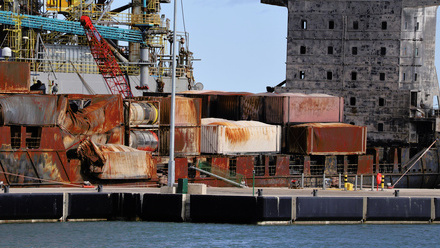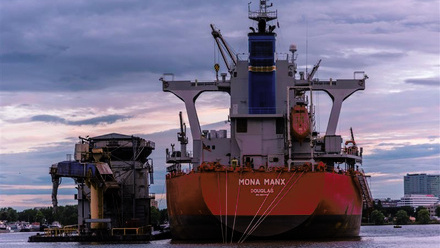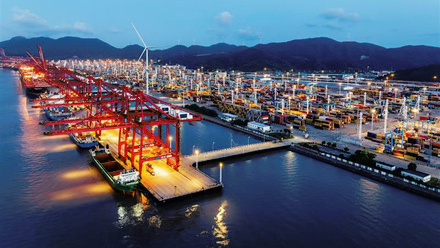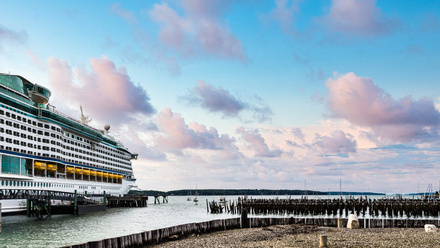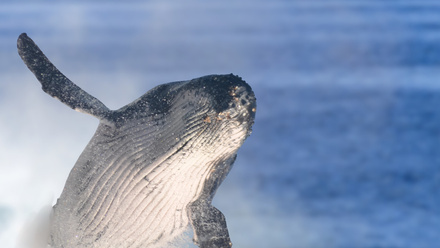Important lessons learned from Scandinavian ship collision
Recommendations about the consumption of alcohol, use of personal electronic devices and the amount of crew on watch at any one time were the result of a deadly collision in the Swedish seas.
On 13 December 2021, the UK registered Scot Carrier and the Danish vessel Karin Høj collided in the precautionary area adjacent to the Bornholmsgat traffic separation scheme, Sweden. As a result, the Karin Høj capsized, and its two crew members tragically lost their lives.
Thus ended a precautionary tale of neither vessel posting a lookout during darkness hours, and a second officer (2/O) being distracted on his tablet computer after having drunk alcohol before and during his watch.
On 16 June 2022, Danish Courts convicted Scot Carrier’s 2/O of manslaughter and maritime drunkenness, sentencing him to 18 months’ imprisonment.
What happened
At five minutes past midnight on 11 December 2021, Karin Høj, a split hopper barge, departed Södertälje, Sweden, bound for Nykøbing Falster, Denmark, after a period of delay thanks to bad weather.
The able seaman (AB) had disembarked, leaving only the barge Captain and Mate. Sometime later, at 7.15pm, UK-flagged general cargo vessel Scot Carrier departed the Latvian port of Salacgrīva, laden with a cargo of timber, on its way to Montrose, Scotland.
Despite leaving different countries at different times, both vessels would go on to ply a shipping route passing by the Danish island of Bornholm to its north. Bigger and substantially faster, Scot Carrier would catch up to Karin Høj, until, disastrously, they converged.
On the calm evening of December 12, an altercation was taking place on the bridge of Scot Carrier. The 2/O had been on watch until 5.10pm, when the Captain, having smelled alcohol on his breath, took over and ordered him to go and rest, and to come back and relieve him at 11pm.
After a movie and several more beers, the 2/O had just two hours of sleep before re-emerging at 10.14pm, and, following a long conversation, eventually took over the watch from the Captain at 11.15pm.
Informed by the Captain that Scot Carrier, making way at 12knots, would soon be catching a smaller vessel, the 2/O settled into his stint as watchkeeper. The ship’s bridge navigation watch alarm system (BNWAS) was installed but deactivated.
“Navigation officers routinely disabled the ECDIS look ahead, radar and AIS alarms because they caused frequent audible and visual distraction,” the Marine Accident Investigation Branch (MAIB) report notes.
It was then the 2/O put music on and, on his tablet, began to exchange messages with “random individuals”.
At 3:03am, 13 December, Scot Carrier’s automatic identification system (AIS) system alerted him to the fact that in just under 20 minutes, the ship would be converging with Karin Høj at a distance of 0.88nm.
By 3:23am, the vessels were 0.6nm apart; on Scot Carrier, the 2/O, still on his tablet, altered course to 270° -- the action that would doom the crew of Karin Høj.
Three minutes later, seeing the barge’s light off the starboard bow, the 2/O panicked, disengaged the autopilot, and put the vessel into full astern. But it was too late.
The bow of the much larger vessel struck the port side of Karin Høj, just in front of the accommodation block. Briefly lifted onto Scot Carrier’s bulbous bow, the little vessel rolled to starboard and capsized.
Conclusion and recommendations
MAIB noted that each vessel had only one watchkeeper, and that the only watchkeeper on Scot Carrier was inebriated and busy with his tablet. Equipment designed to keep him on-task, including equipment designed to notify him of an imminent collision, was switched off.
In the wake of the accident, Intrada Ships Management Ltd reiterated to its Masters, “[The] requirements for lookouts during the hours of darkness, alcohol policy, use of personal electronic devices when on duty and the use of BNWAS.”
The company also “increased the frequency of random unannounced drug and alcohol screening of its ships’ crews” and “revised its alcohol policy to require that any beer available on board must contain an alcohol by volume of less than 5%”.
MAIB’s recommendations, meanwhile, were simple: more crew are required on the bridge. “The posting of a lookout in addition to a bridge watchkeeper during the hours of darkness and restricted visibility is an absolute requirement in UK waters and on UK ships,” it said.
In addition, it separated the two ships, with the managers of Scot Carrier instructed “to expand its third-party navigation audits across the fleet"; meanwhile, the owners of Karin Høj were to “introduce stricter manning oversight on board its vessels”.
Main image: View from Malmo in Sweden across Oresund straight, near to Bornholmsgat traffic separation scheme; credit: Shutterstock

